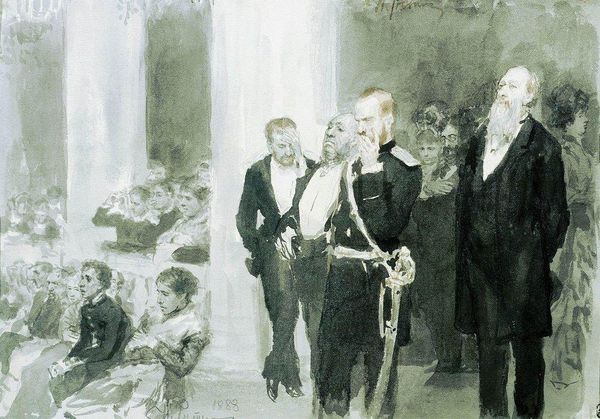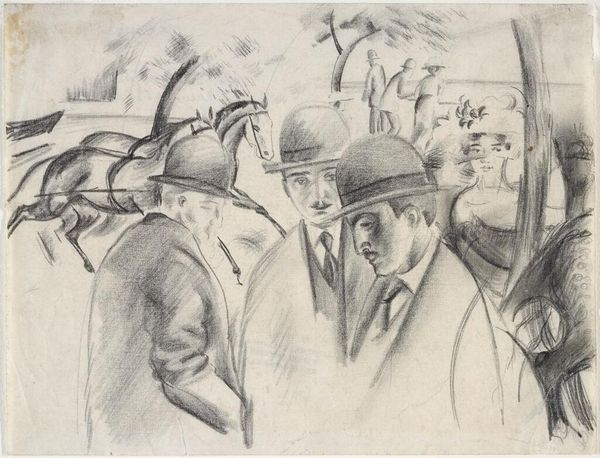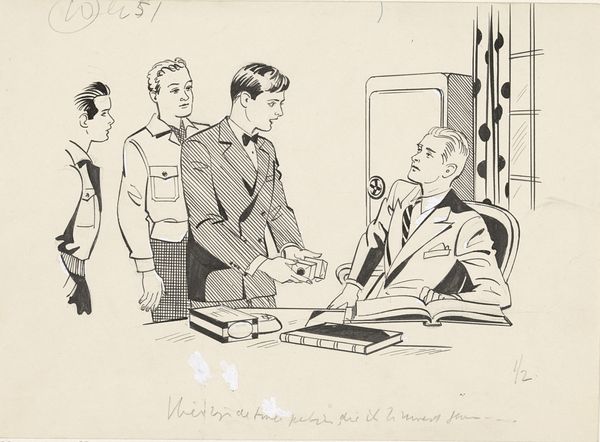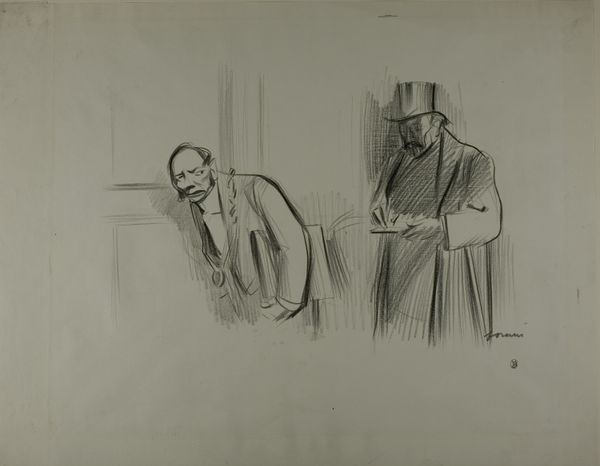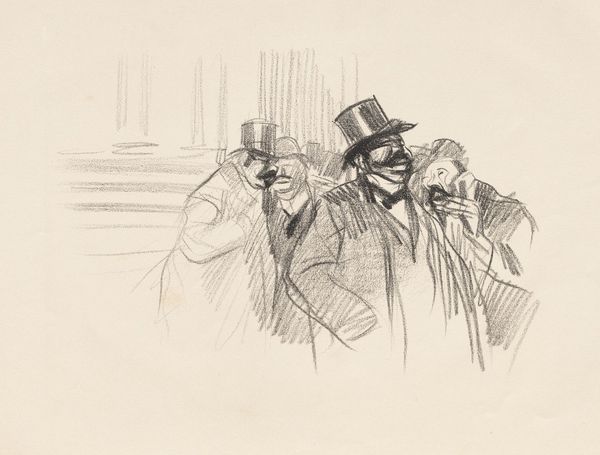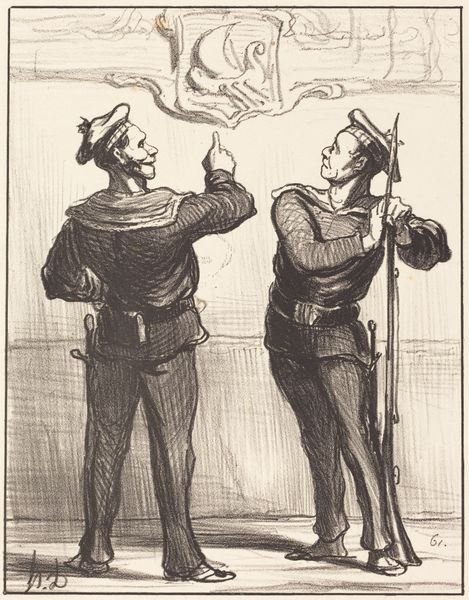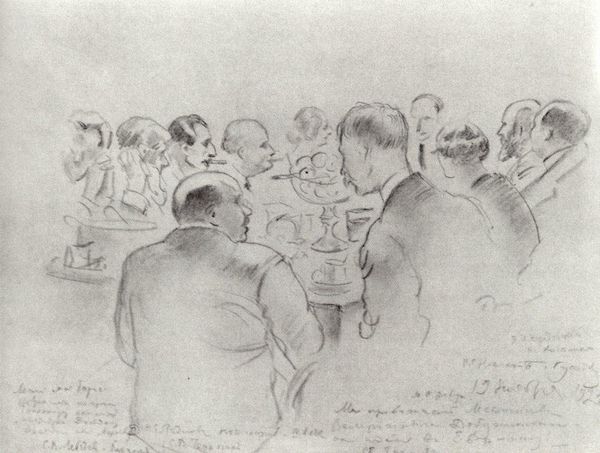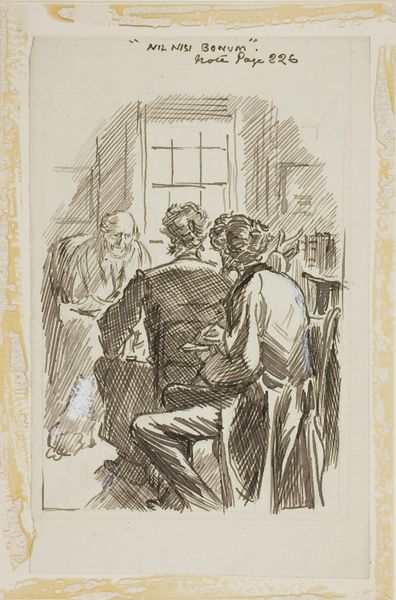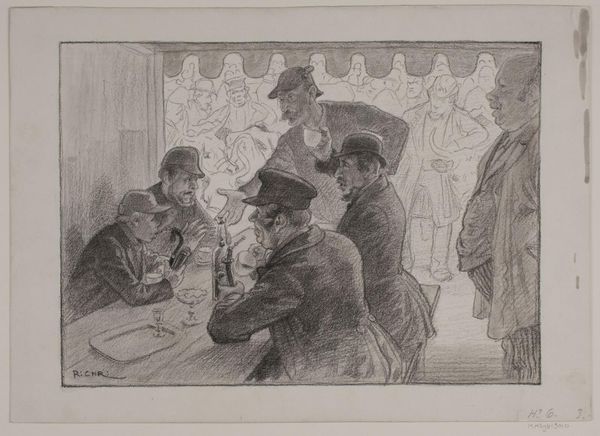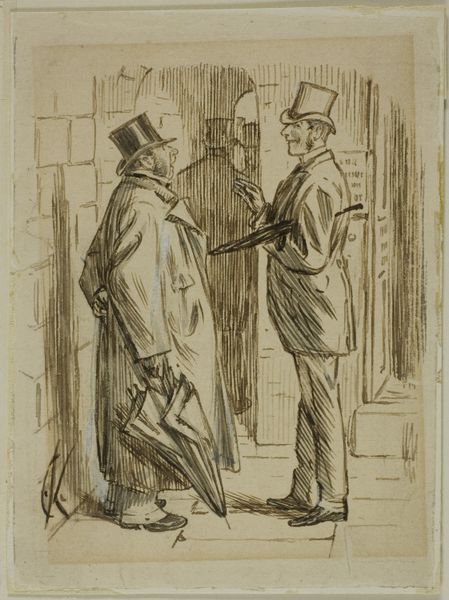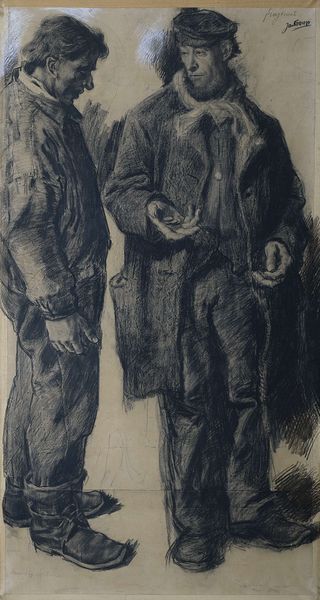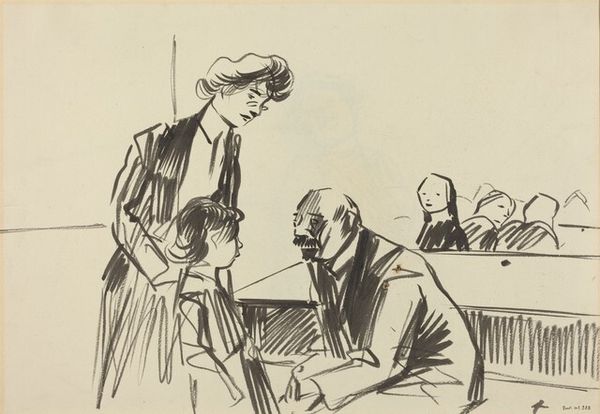
painting, oil-paint
#
painting
#
oil-paint
#
oil painting
#
genre-painting
#
portrait art
#
realism
Copyright: Modern Artists: Artvee
Curator: Here we have a painting entitled "The Man Next Door" by Haddon Hubbard Sundblom. What's your immediate read of this scene? Editor: Unease. There’s a stillness that suggests a disturbance of the ordinary. The policemen's presence, combined with the man’s somewhat bewildered expression and the peering woman behind him, makes the narrative intriguing but troubling. Curator: Precisely. The very title invites us to question assumptions about domesticity and criminality. In genre paintings like this, how are traditional ideas about American identity negotiated and sometimes subverted? What narratives do we create? Editor: The rose on his lapel…it’s a striking visual element amidst the sobriety. Symbolically, roses signify love and passion but can also represent secrecy. It could suggest a hidden aspect to the man’s life or identity. There is a sense of dualism, and not being exactly who one presents to be. Curator: Yes! Consider the semiotics of their clothing. The dark suit contrasts sharply with the police uniforms, immediately positioning the man as an outsider within a presumed space of law and order. How much does context dictate meaning here? We immediately want to label or judge him, even before learning what's happening. Editor: The architectural backdrop contributes as well. The geometric patterning beside the door becomes an almost oppressive presence – order versus the unknown contained inside the building. Is that light shining down judgment or illumination? Curator: And the way the police officers are positioned—almost blocking our entrance, their faces resolute, is certainly part of the psychological drama unfolding before us. Note how the composition pushes the figures to the forefront. The realism of the technique, paired with this high-stakes domestic drama, highlights questions of visibility, suspicion, and assumed guilt. Editor: It also prompts reflection on our preconceived notions when interpreting signs and images, especially those involving the tension between safety and vulnerability in private spaces. This could very well become someone’s lasting impression based on this single moment. Curator: Yes, precisely! It asks us to question those very biases and presumptions—to look beyond surface-level symbols and explore more profound social anxieties. Thank you!
Comments
No comments
Be the first to comment and join the conversation on the ultimate creative platform.
